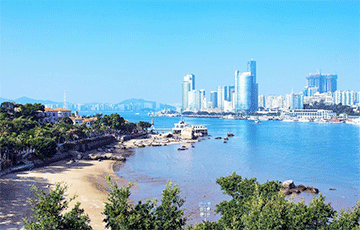China Brazenly Maps The Seafloor Near Taiwan And An Important U.S. Naval Base
1- 12.07.2025, 6:05
- 6,600

What do these actions mean?
China is actively exploring the oceans, with big ambitions to utilize marine resources, but also preparing for a confrontation at sea with the United States and its allies. This is reported by The New York Times.
"Chinese research ships are exploring deeper and farther, gathering information that could expand understanding of marine life and the impact of climate change. But their findings could also serve China's naval interests, such as deploying submarines in the Pacific or trying to track low-profile U.S. submarines," the publication said.
According to public records, Chinese research vessels have in recent years conducted detailed studies of waters off the east coast of Taiwan and around the island of Guam, which hosts a key U.S. naval base responsible for defense in the western Pacific.
Chinese vessels passed there in parallel lines or on a tight grid, which experts say indicates a methodical effort to gather seafloor information at these strategic locations. This information would be very useful, for example, in planning underwater military operations.
Because these surveys are conducted nominally by civilian vessels belonging to scientific institutions and universities, their activity attracts less attention, and this gives the Chinese the ability to operate more freely in these "sensitive" waters. At the same time, Chinese vessels clearly keep to neutral waters, not crossing maritime boundaries, which prevents, for example, the Taiwanese military from interfering with the work of these "researchers," even if the military interest of their research is obvious.
The information collected by the Chinese could be useful to better determine, for example, submarine routes and optimal locations for submarine ambushes or underwater mines, said Tom Stefanik, a submarine expert at the Brookings Institution.
Of course, this "scientific" activity by the Chinese has caused great alarm throughout the Asia-Pacific region.
"China's expanding maritime capabilities deserve close attention, especially its 'research' vessels that are mapping the seabed, deploying sensors and paving the way for underwater operations," noted Jennifer Parker, a former Australian naval officer who is now an expert at the Australian National University's College of National Security.
"It is difficult for us to consider this situation normal," said Taiwan Ocean Affairs Council Minister Kuan Bi-ling.
Despite these concerns, however, Chinese research vessels continue their suspicious activity. In June, for example, the vessels Xiang Yang Hong 1 and Xiang Yang Hong 5 arrived in the seas east of Guam and resumed detailed seafloor mapping.











